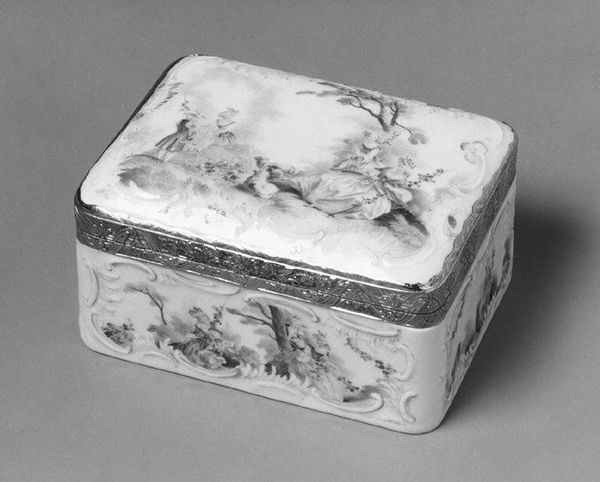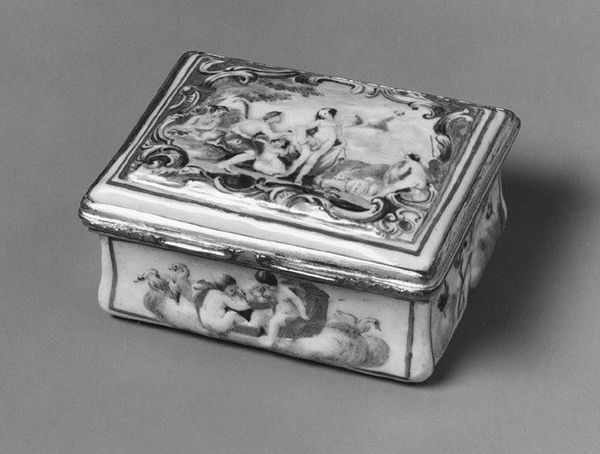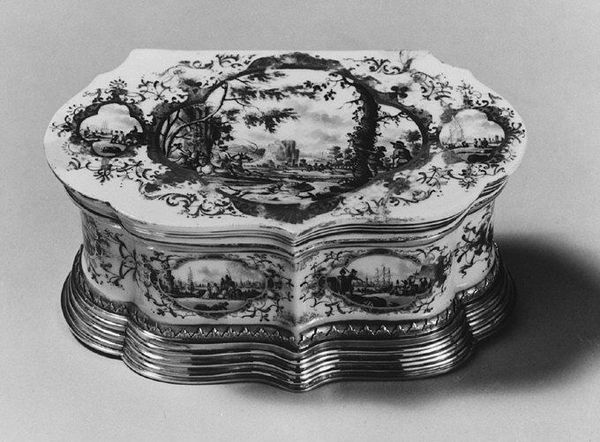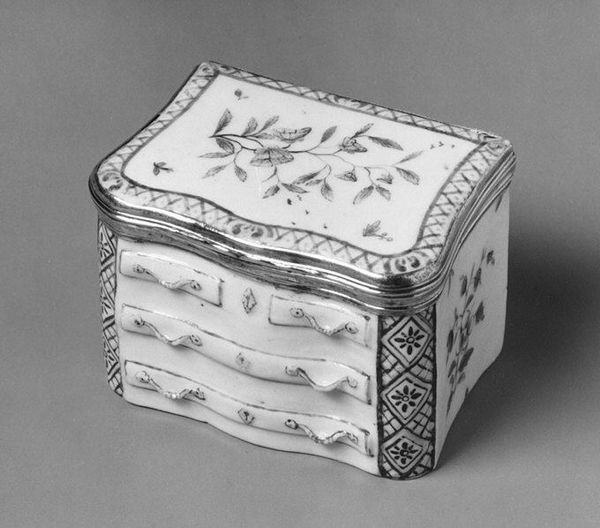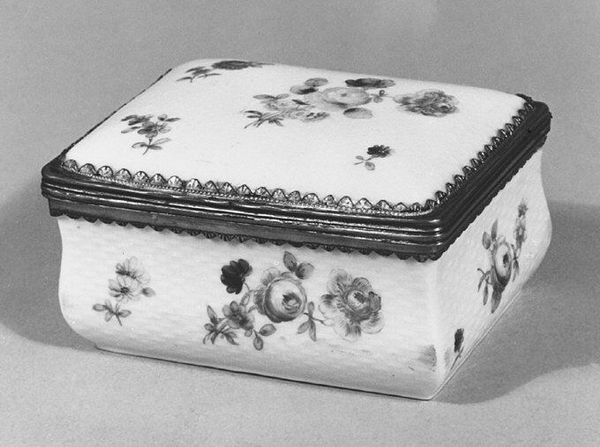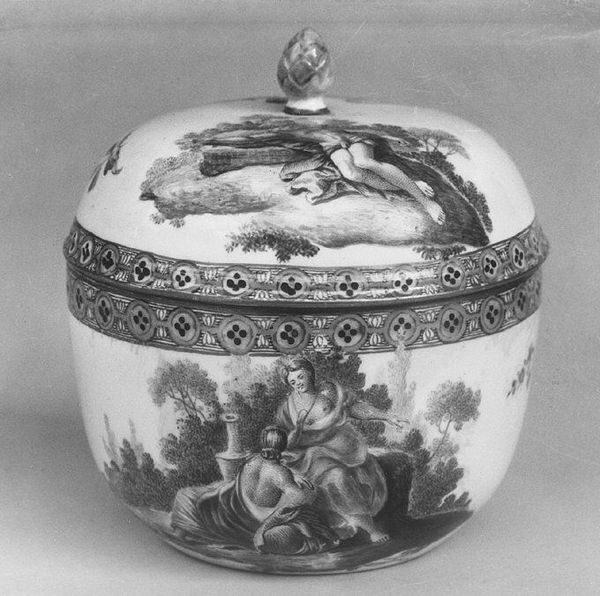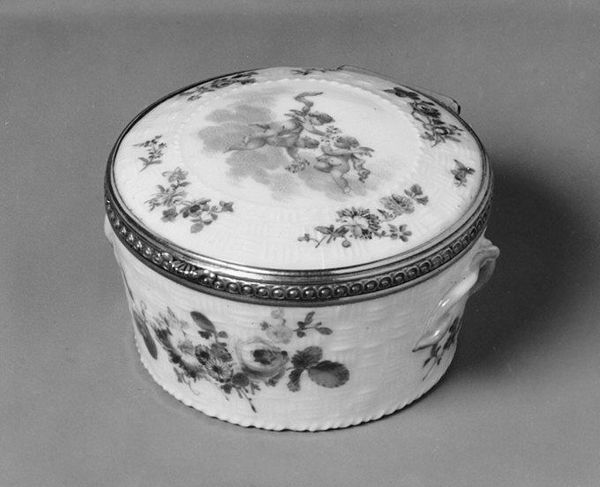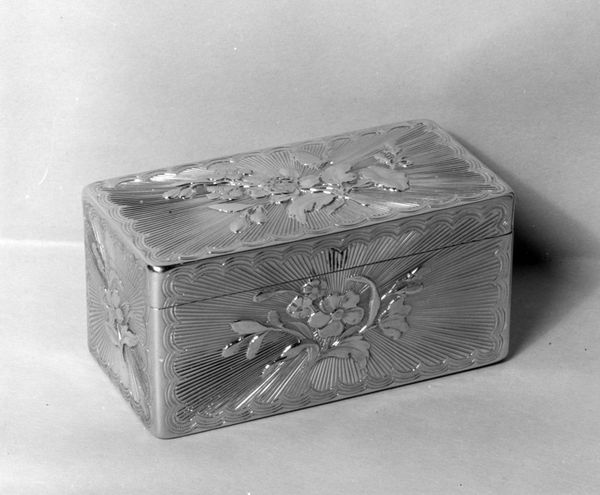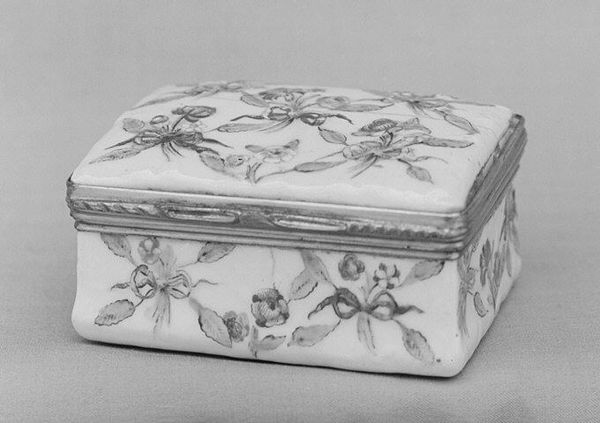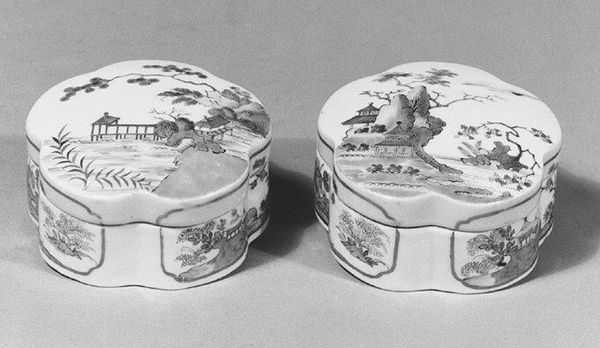
ceramic, porcelain, sculpture
#
landscape
#
ceramic
#
porcelain
#
figuration
#
sculpture
#
black and white
#
decorative-art
#
miniature
#
rococo
Dimensions: Height: 1 1/2 in. (3.8 cm)
Copyright: Public Domain
Curator: Let’s consider this porcelain Snuffbox, crafted circa 1750 to 1760 by the Meissen Manufactory. It currently resides at the Metropolitan Museum of Art. Editor: What a charming, if somewhat austere, object! The grayscale decoration gives it a surprising solemnity. The Rococo style is definitely toned down. Curator: Indeed. Note how the shape adheres to the classical principles of symmetrical proportion, and observe how the miniature landscapes, though decorative, create spatial depth through careful gradations of tone. Editor: And the miniature painting… such meticulous work! One has to wonder about the process: how many hands touched this object, how many hours were spent just on painting the landscape, and what kind of working conditions would have enabled such fine detail. Curator: An important perspective! Though, I would suggest viewing the box in terms of its functionality. A snuffbox serves to hold and dispense powdered tobacco. Does this miniature, self-contained world enhance that experience? Is it perhaps a metaphor for private pleasures, for refined leisure? Editor: Perhaps. Or, thinking about materiality, the fineness of the porcelain also speaks volumes about trade and privilege in the 18th century. What processes made it white, fine and delicate. Curator: Good point, this level of quality certainly implies considerable resources and access to rare materials and specialized labor. Consider how this aligns with the fashions of the French court, influencing porcelain production across Europe. Editor: These boxes feel so intimate, both physically and socially. Who had access to such precious goods and snuff? To which markets were the Meissen boxes traded? And where was the raw material to manufacture this beautiful miniature object of status and pleasure sourced? Curator: Considering the miniature scale and refined artistic execution, this object transcends mere functionality, embodying an artistic expression in miniature form. Editor: Seeing how it has become an objet d’art in the museum shifts its meaning again, decades and continents removed from its site of production. We can ask similar questions of almost anything. What labor produces value? Where is that labor located? Curator: It certainly presents much food for thought—even regarding an object as seemingly simple as a Snuffbox.
Comments
No comments
Be the first to comment and join the conversation on the ultimate creative platform.
